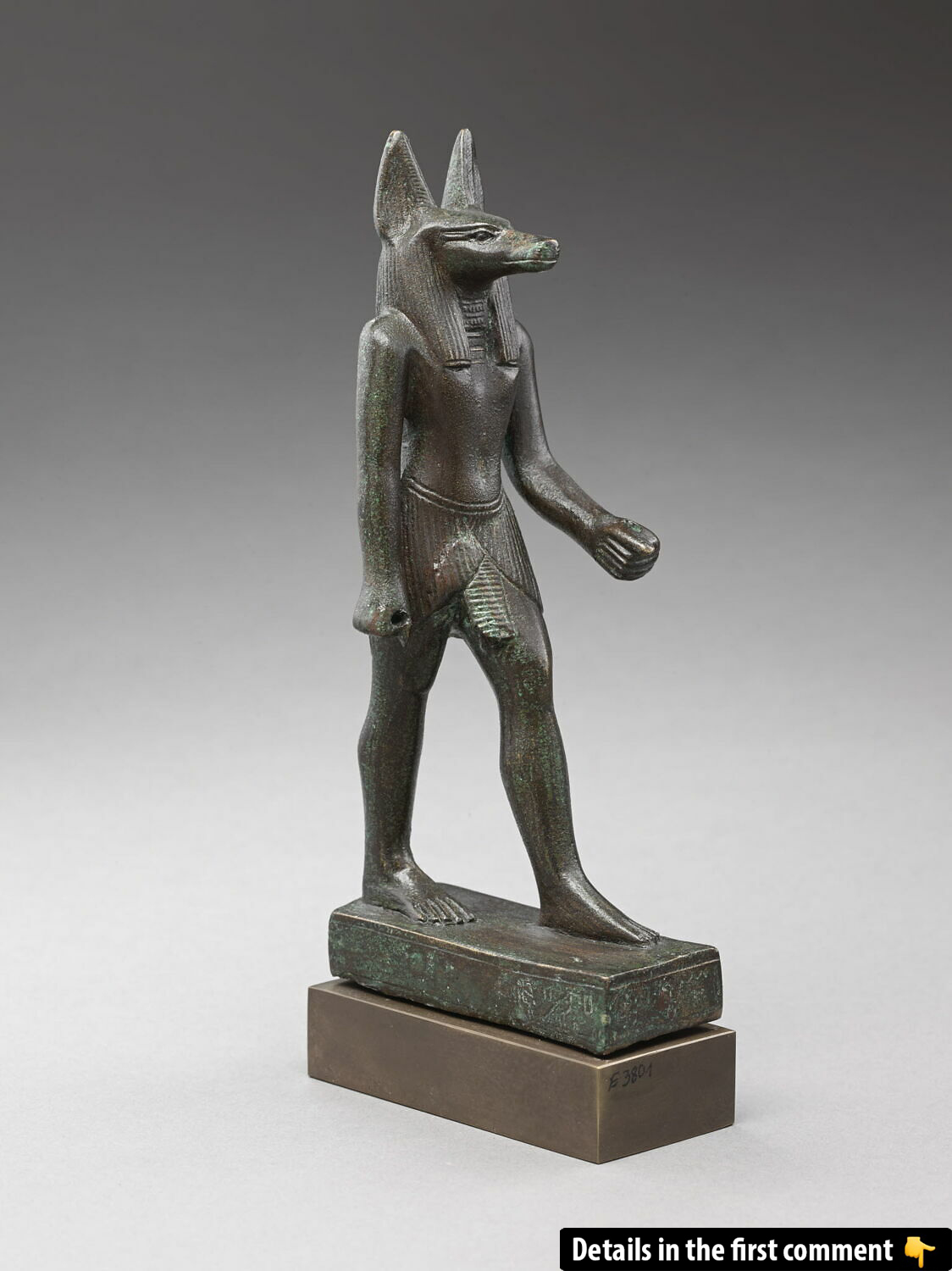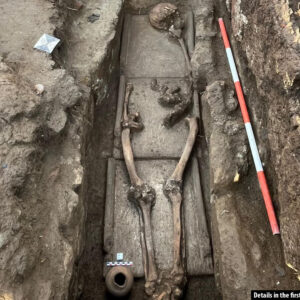Anubis, the ancient Egyptian god of mummification and the afterlife, is one of the most iconic figures in Egyptian mythology. Often depicted with the head of a jackal, Anubis represented protection, judgment, and the safe passage of souls into the afterlife. A statue of this powerful deity, now housed in the Louvre Museum, offers a striking glimpse into the religious practices and artistry of ancient Egypt. This figure not only highlights Anubis’s role as a guardian of the dead but also serves as a testament to the craftsmanship and spiritual significance embedded in Egyptian funerary art.
The Statue of Anubis: Description and Artistic Features
One of the finest examples of Anubis’s artistic depiction is a statue that is now housed in the Louvre Museum, cataloged as E 3801. This statue of Anubis stands in a protective, authoritative pose, reflecting the god’s role as both a protector and a guide for the dead. In this particular statue, Anubis is shown with the traditional jackal head, symbolizing his association with the afterlife and mummification. The protective stance, with his arms slightly raised, suggests his role in safeguarding the deceased, ensuring their safe passage to the afterlife.
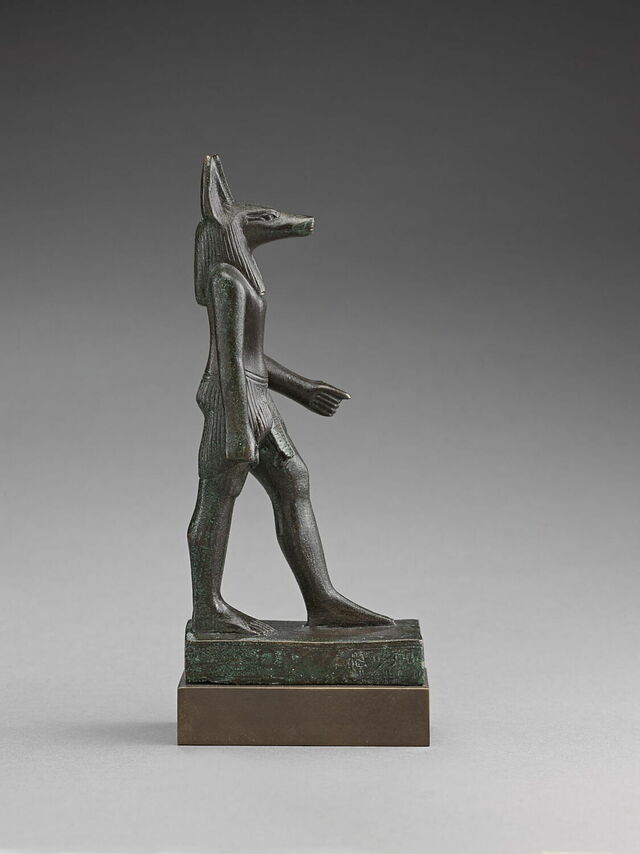
Crafted from copper alloy, this statue stands out for its remarkable attention to detail. Unlike many of the larger stone statues found in temples and tombs, this smaller statue allows for intricate detailing thanks to the malleability of copper. The use of copper reflects not only the skill of Egyptian artisans but also the symbolism of the material itself, which in many ways mirrors the concept of transformation — as copper was used in many religious and funerary objects, symbolizing the journey between life and death.
Video
Watch the video to explore Anubis, the Egyptian god of death! Don’t miss this captivating look at his role in ancient Egyptian mythology and rituals.
The Religious Context of the Statue
The statue of Anubis was created during the 26th Dynasty (ca. 664–525 BC), a time when Egypt saw a resurgence in the worship of deities and the refinement of artistic styles. During this period, the belief in an elaborate afterlife was at its height, and statues like this one were crucial elements in religious and funerary practices. Anubis was not only a god of the afterlife but also a figure central to the mummification rituals that ensured the deceased’s soul would reach its final resting place.
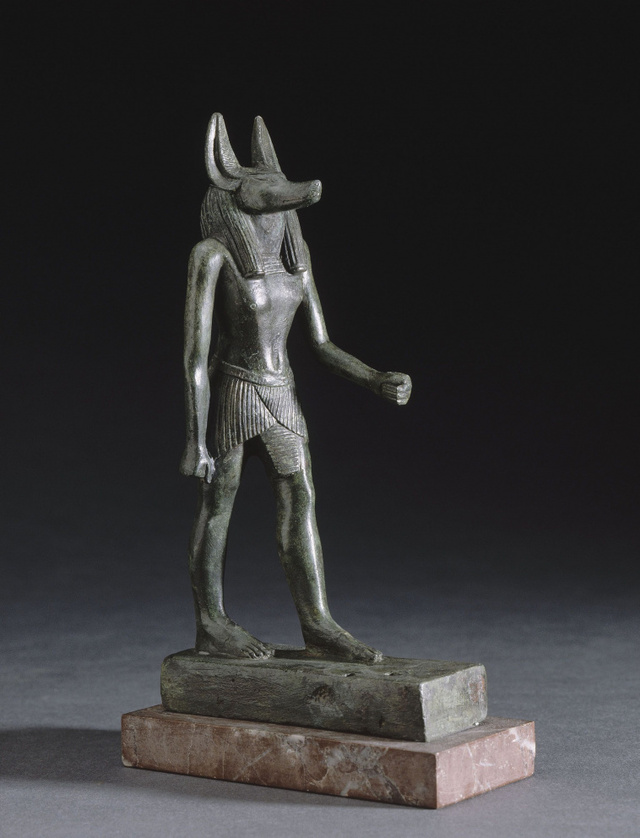
Anubis’s involvement in the Weighing of the Heart ceremony is an integral part of Egyptian religious thought. This ceremony, which took place in the Hall of Two Truths, involved weighing the heart of the deceased against the feather of Ma’at, the goddess of truth and justice. If the heart was lighter than the feather, the deceased would be granted eternal life. Anubis, as the god who oversaw this ceremony, was considered both a protector and a judge, ensuring that only those worthy would move on to the afterlife.
The symbolism behind Anubis’s representation in statues is profound. These images were meant not only to invoke his protection but also to ensure that the divine figure would be present in both life and death, maintaining the sacred link between the living and the afterlife. The presence of such statues in tombs or temples served a dual purpose: as objects of devotion and as practical agents in ensuring a safe journey for the soul.
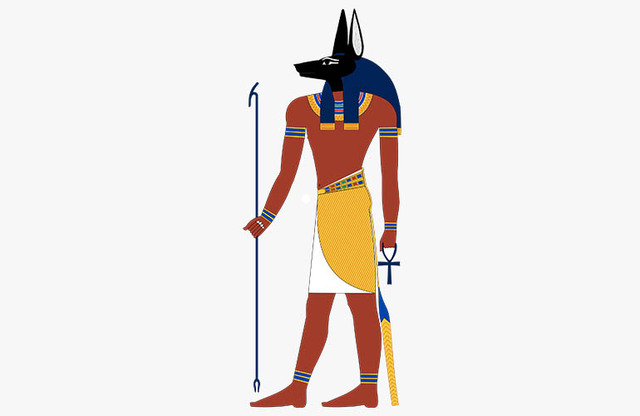
The Inscription and Dedication
An important feature of this particular statue is the inscription dedicated to Anubis by Padihorpakhered, a high-ranking official likely associated with religious ceremonies. Padihorpakhered’s dedication emphasizes the personal devotion that Egyptians had to their gods, with many individuals commissioning statues to be placed in tombs or temples to ensure divine favor. Statues like this one were often commissioned by individuals seeking protection for themselves or their loved ones in the afterlife.
The inscription highlights the belief that one could maintain a connection with the divine even after death. By commissioning such statues, individuals ensured that their spirits would not be forgotten and that they would continue to receive the gods’ favor in the afterlife. The dedication, therefore, is not just an act of religious observance but also one of personal devotion and a desire to continue to be part of the divine cycle of death and rebirth.
Anubis’s Continued Influence in Egyptian Art
Anubis’s influence on Egyptian art and culture is evident in the numerous statues and representations of him found in tombs, temples, and other sacred spaces. The presence of his image was not just an aesthetic choice but a symbolic one. These statues were designed to ensure that Anubis’s protective and guiding powers would be invoked for the deceased, allowing their soul to travel safely through the afterlife.
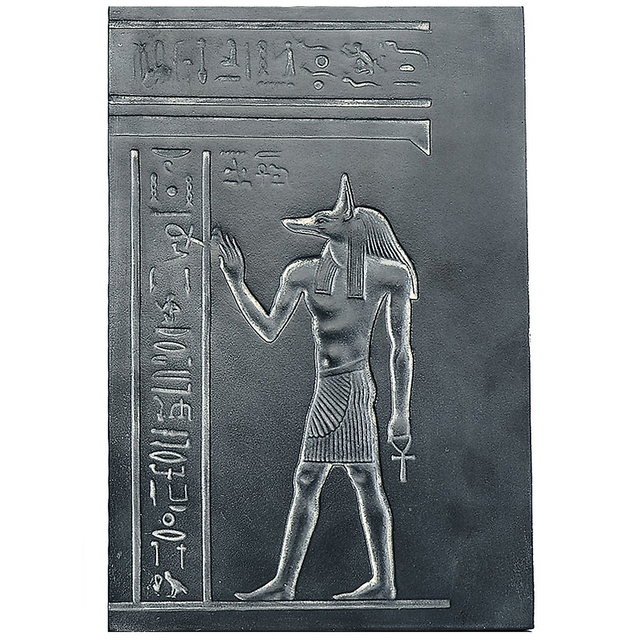
Throughout Egyptian history, Anubis remained a key figure in the pantheon of gods, and his representation evolved in art to reflect changes in religious thought and practices. As the god of the afterlife and mummification, Anubis remained central to Egyptian beliefs about death and rebirth, and his image continued to serve as a reminder of the spiritual journey that awaited each individual after death.
Conclusion: Anubis’s Lasting Legacy
The statue of Anubis at the Louvre stands as a testament to the enduring legacy of ancient Egyptian religion and artistry. It reflects not only the skill of Egyptian craftsmen but also the deep spiritual and cultural beliefs that shaped the lives of the ancient Egyptians. Anubis, as a god of death and the afterlife, was a central figure in Egyptian religion, and his image continues to captivate modern audiences with its blend of artistry, symbolism, and mythology.
As one of the most important deities in Egyptian culture, Anubis’s influence can still be felt today. His role in mummification and the afterlife was vital to the ancient Egyptians’ understanding of life, death, and the spiritual journey. The statue of Anubis serves as a window into this ancient world, reminding us of the deep connections between art, religion, and culture in ancient Egypt.
Video
Watch the video to see the discovery of Egyptian mummies buried for over 2,600 years, featured by NBC News! Don’t miss this incredible archaeological find and its historical significance.
